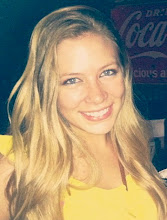Chapter 6: Modern Fantasy
Modern fantasy is a favorite among many children, and even many adults. This genre of literature can be considered either low fantasy or high fantasy. Low fantasy uses the real world and includes magical elements into the story. An example of this would be Toy Story or Charlotte's Web. As for high fantasy, these stories project into a new world such as in, The Chronicles of Narnia. Modern Fantasy children's books also use folklore elements or well-known traditional tales in them in order to create that magical, yet believable piece of the story. Science fiction may also be included in modern fantasy, too. This encourages the reader to believe the unbelievable because it is based on science facts, with the futuristic or magical element embedded in it.
There are many benefits to incorporating modern fantasy into curriculum and your student's lives. A modern fantasy book uses metaphors to illustrate the truth about life, which is very important for students to grow up understanding. Many adults say that modern fantasy books provided inspiration, understanding, and motivation for them into adulthood. I think that modern fantasies are great in that they help students understand difficulties in life, without providing it in an unhealthy way. Many modern fantasy books are challenged because of their truthfulness that many parents may not want their children exposed to. I think that everyone is exposed to problems in their life and I think putting it in a sensitive way such as a children's book will help children to understand and accept the problems and difficulties associated with life at an earlier time. Some examples that have been challenged multiple times are the Harry Potter Series and The Giver.
It is really important to evaluate modern fantasy books to make sure they are best suited for your class. The setting should be believable and the plot should have magical elements in it. Also, the behavior of the characters should be consistent and the style must be understandable to the children. Lastly, the theme should be able to be connected to life and the experiences of the reader. This is where getting to know your students can be helpful. Consider the experiences of the students in your class. If a tragedy in the community or there is a certain experience you think they will all be able to relate to, it would be good to find a book that encourages the understanding of that situation.
Overall, modern fantasy children's books are a magical experience for children. They learn about the truth of life while reading a magical story that brings them into the story enough for them to believe it. These books can easily be incorporated with other subjects like history and science so students can have a fun story associated with their lesson. I think reading a modern fantasy related with a history lesson will help the students get more motivated and interested in what they will be learning.
